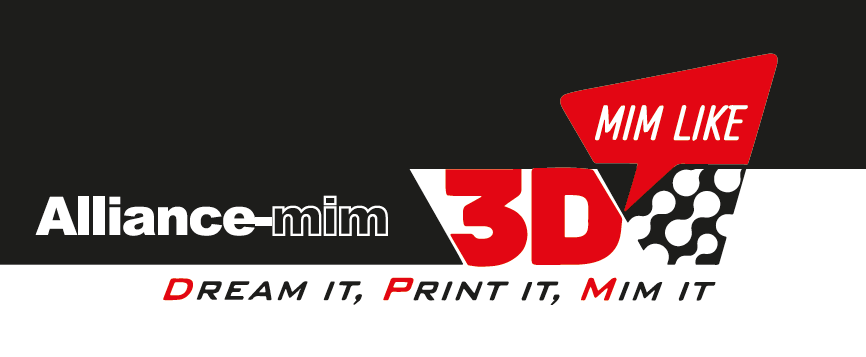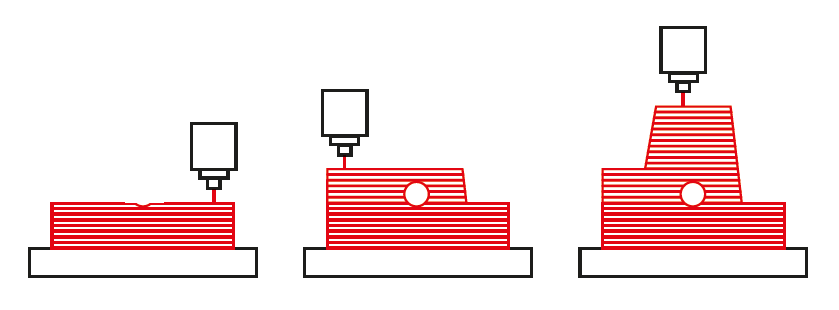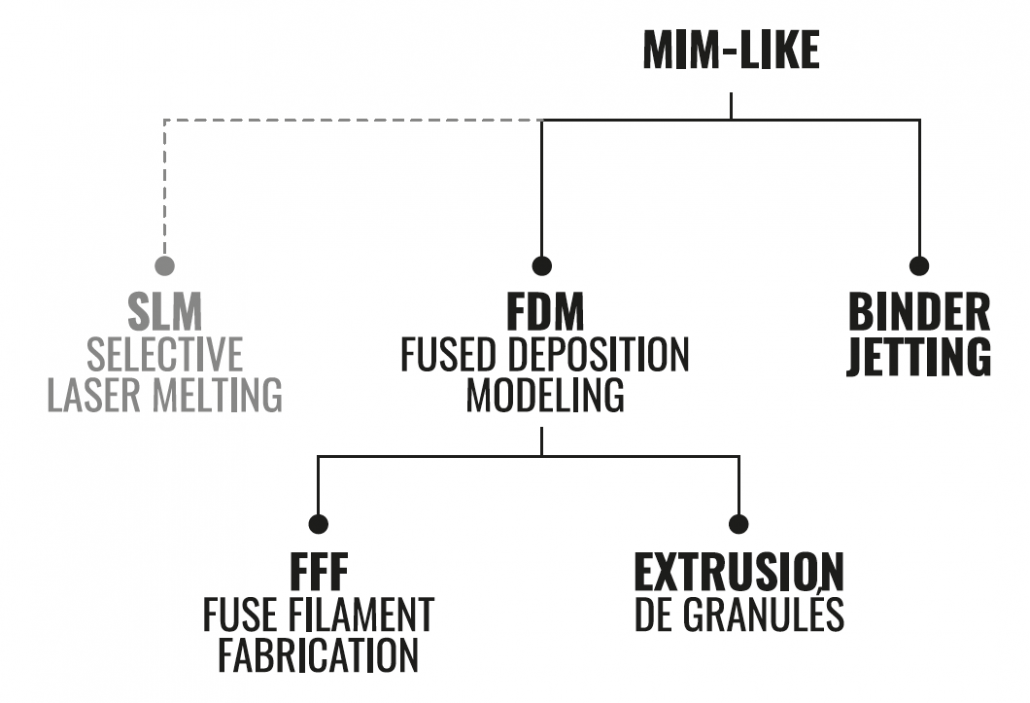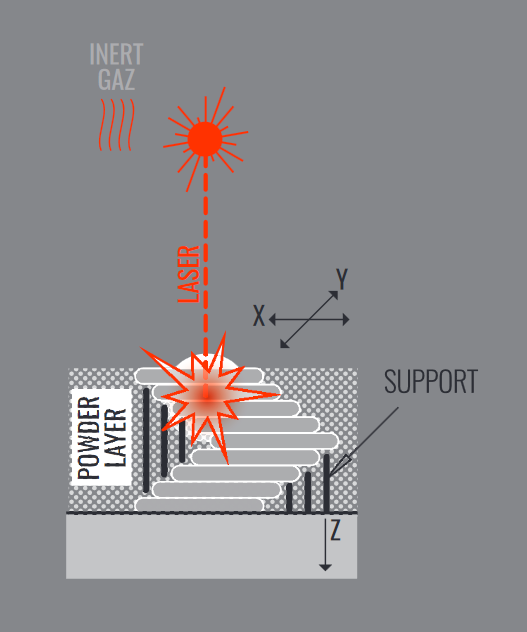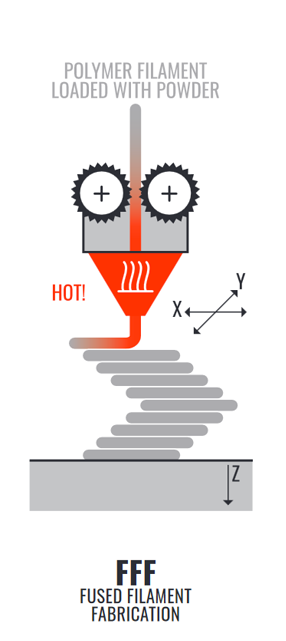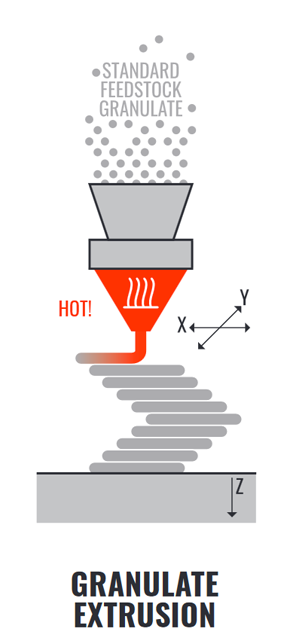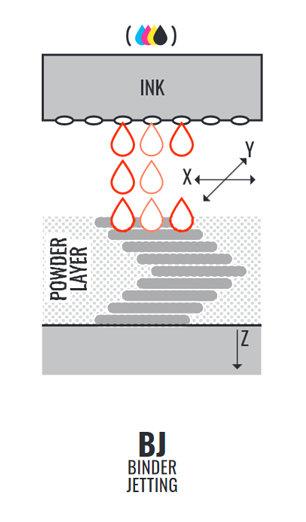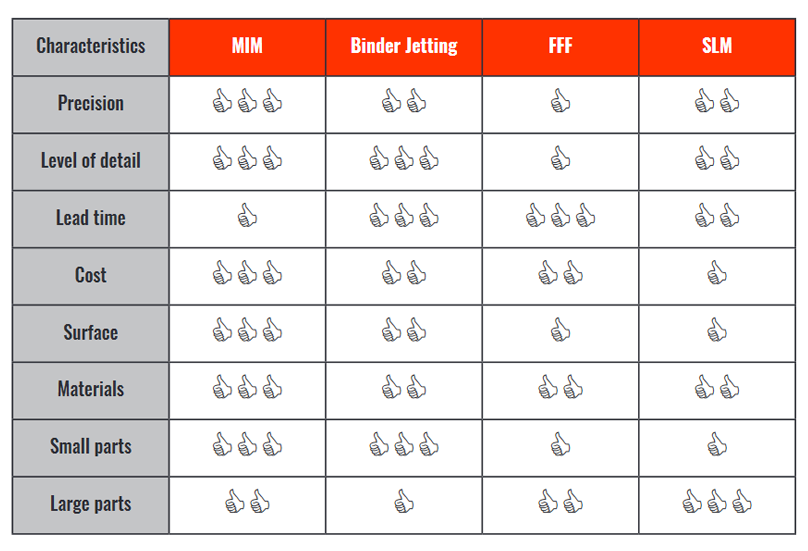MIM
MIM
Metal Injection Moulding
MiM is a “formative” technology that uses a mould to shape the material around holes. The advantages of the mould are multiple: particularly good reproducibility, good surface finishing and the capacity to achieve high production rates.
Nevertheless, the mould can sometimes be a hindrance to large-scale use of MiM, especially in the case of small series or when the design of the product has not yet been completely finalized. To overcome these limitations, the printing processes, also known as additive technologies, are a recent alternative that render possible the manufacture of highly complex parts without tooling.
Le MIM-Like
SLM
Selective Laser Melting
There are several technologies for printing metal parts from powders, some similar to MiM and others not. SLM (Selective Laser Melting) starts with a layer of powder contained in a prismatic en-closure (box) and builds the part layer by layer, through laser fusion of the powders. This technology is quite different than MiM in that the powders used are larger (50 microns compared to 20 microns for MiM) and the metallurgical structure is of the micro-foundry type with all the associated phenomena of segregation and residual stresses. Moreover, the powder layer is not self-supporting, and the process requires the creation of supports which must be removed through secondary operations.
The surface finishes are coarse, and the parts may be prone to cracking, but this technology can be used to produce large parts, especially when using alloys that are easily welded, such as titanium.
MIM-Like Deposition
Other printing technologies are similar to MiM and are therefore called MiM-like.
The first process, (FFF, which stands for Fused Filament Fabrication or FDM for Fused Deposition Modeling) begins with a filament of feedstock which is printed with a standard commercial machine. The green part is then debounded and sintered exactly like an injected part. The advantage is that each customer can print a part at home and give it to Alliance-MiM for sintering.
The second technology (extrusion) is a variant of the latter wherein the filament is directly manufactured by the printer from the same granulate as that used for injection. This allows us to have access to all materials in the MiM range but needs a dedicated machine.
MIM-Like Impression
The third technology is called binder jetting and is similar to SLM in the notion of a “box” and a powder layer. But, in this case, it is a printer head that selectively dispenses the binder rather than a laser beam that produces the shape. In this case the powder layer is stable and the parts can be stacked which results in a much better yield. In addition, there is no need to create cohesive supports, which mini-mises secondary operations.
Once the part has been printed, it is debounded and sintered like an injected part. This technology, which gives surface finishes between those of MiM and SLM, is reserved for small parts (less than 50 mm).
The common feature of the MiM-like techniques is the powder and the sintering process used are the same, thus producing parts that have the same metallurgical properties as those produced using MiM.
MIM-like makes MIM flexible and fast,
MIM makes MIM-like scalable.
The perfect association.
From 1 to 1,000,000 parts using the same metallurgy.And therefore, the same properties.
Parts in less than 10 days.


